JakFrost
Limp Gawd
- Joined
- Dec 2, 2005
- Messages
- 241
Previous Post: The Hidden Cost of an SSD Upgrade (Intel SSD + nForce4 Chipset = No RAID! -> Upgrade)
Reason for Upgrade
I am now looking at doing a computer upgrade to the Intel Core i7 architecture because of the problems with the nVidia nForce4 and the Intel SSD that I just purchased forcing me to choose between using the new SSD or RAID-1 mirror that I have been using for years on my system. The details of the problems are in the thread linked to above.
I've come to the conclusion that the only real solution is to upgrade my 3.5-year old system to rid if off the nForce4 chipset motherboard to solve the problem with SSD incompatibility with the nVidia RAID drivers and also to give my system a much needed upgrade.
I've had this upgrade already pretty much speced out for a few months in my Newegg Wishlist.
I'm looking for some feedback about this configuration and any issues or caveats that I might not be aware of.
I've actually setup a system exactly like this, except for a smaller 92mm heatsink just a few months ago for a friend of mine for his Ultimate HTPC as I described in that thread. Everything worked for the system install and setup but I haven't been able to use it again since then to test it or to find out any issues.
Intel Core i5 out on September 1, 2009
I know that the less expensive and dual-channel only memory architecture based Core i5 and i3 components are coming in only two months and two weeks. I've considered waiting until that time before I do the upgrade just in case there is a price drop on the existing parts, but I'm not sure that the wait is even worth it since the new offerings will be lower priced than the current parts so there is a chance of no, or very little price drop potential. Normally new releases come out as the more expensive and faster parts but in this case it is the reverse.
Any sense in waiting until September 1 to upgrade to a less powerful Core i5 or buy Core i7 parts if there is a price drop?
The Parts
Below are the parts that I picked out. I used all of them before and they all worked together well. Any issues that I should know about?
Processor: Intel Core i7 920 Nehalem 2.66GHz 4 x 256KB L2 Cache 8MB L3 Cache LGA 1366 130W Quad-Core Processor - Retail - $279.99
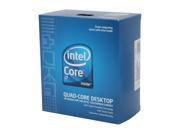
Motherboard: ASUS P6T LGA 1366 Intel X58 ATX Intel Motherboard - Retail - $249.99

Memory: G.SKILL 6GB (3 x 2GB) 240-Pin DDR3 SDRAM DDR3 1600 (PC3 12800) Triple Channel Kit Desktop Memory Model F3-12800CL8TU-6GBPI - Retail - $99.99

Heatsink: XIGMATEK HDT-S1284EE 120mm Rifle CPU Cooler - Retail - $39.99
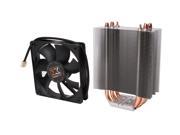
Bracket: XIGMATEK ACK-I7363 CPU Cooler - Retail - $9.99
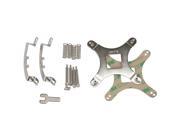
FrostyTech - Xigmatek HDT-S1284EE Heatsink Review
Alternatives
One alternative selection that I might consider is the heatsink and fan change but I used the 92mm model of the Xigmatek on the HPTC built and it worked very well and I liked the heatsink and the very sturdy bracket used for installation with the same P6T motherboard.
FrostyTech - Top Tested CPU Heatsinks At A Glance
Heatsink: Sunbeam CR-CCTF 120 mm Core-Contact Freezer CPU Cooler W/TX-2 - Retail - $39.99
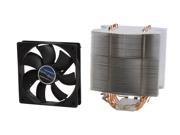
Bracket: Sunbeam CR-LGA1366 LGA 1366 Core I7 Retention Bracket - Retail - $9.99
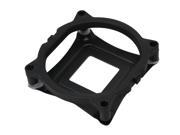
[size=-2]
CPU: AMD Opteron 175 Dual-Core 2.2 GHz 1 MB 90 nm 939 11x CCBWE 0543TPMW VID 1.350 V - 2,475 MHz (225x11x4), 1.55 V (1.55 V x 104.8 %)
FAN: Zalman CNPS9500 LED 92 mm Fan+Heatsink + Arctic Silver 5 Thermal Paste 99.9 % - 35 C Idle, 45 C Load
MOB: DFI LanParty UT SLI-DR Expert 939 nF4 PCI-e Rev.AA0 - BIOS: 2006-04-06 Modded, LDT 1.20 V, Chipset 1.52 V, 42 C Load
RAM: Mushkin 1 GB XP4000 Redline 991493 DDR500 3-3-2-8 2.6-2.9 V CE-6 - (4) DIMMs, 225 MHz (1:1) 2T 3-3-2-8, 2.80 V
VID: eVGA nVidia GTX 260 896 MB G92 192c 576/999 MHz PCI-e 2.0 16x 2xDVI 1xSVid 1xHDTV - 600/1100 MHz, DVI to LCD, HDMI 60' to 50" Plasma TV.
SAT: Silicon Image 3114 PCI SATA-I 150 MB/s RAID 0,1,5 Onboard Controller FW: 5.3.14 Modded, Only for eSATA since PCI bus problems with Sound Blaster X-Fi
SSD: Intel X25-M 80GB MLC SSD SATA II 3 GB/s - FW: 8820
HDD: Western Digital Caviar SE16 500 GB WD5000AAKS 16 MB SATA-II - (2) in (2) 465 GB nVidia RAID1 (Mirror) Arrays
HDD: Western Digital Caviar GP Green 1 TB WD10EACS 16 MB SATA-II - (2) external Movies, (2) external for Backups
ENC: MacAlly G-S350SU External HDD Enclosure 3.5" eSATA USB 2.0 Aluminum, Universal 12V Adapter - (2) external WD GP 1TB for Movies
ENC: i-Rocks 9410 External HDD Enclosure 3.5" eSATA USB 2.0 Aluminum, Univeral 12V Adapter - (2) external WD GP 1TB for Backups
NIC: nVidia nForce4 Gigabit Onboard PCI NIC
NIC: Marvell Yukon 88E8001 Gigabit Onboard PCI NIC
SOU: Creative Labs Sound Blaster X-Fi Xtreme Music 24-bit 128-Voice 109dB SNR - EAX 4.0 for games and music.
SOU: RealTek ALC850 AC'97 Rev 2.3 8-Channel Onboard Audio - S/PDIF out to vid card for HDMI Audio for TV.
BLU: LG GGW-H20L Blu-ray 6x BD-RE 16x DVD SL/DL 48x CDR SATA - FW: YL05
DVD: NEC ND-3550A 16x DVD+-RW SL/DL 48X CDR PATA - FW: 1.07
POW: OCZ PowerStream 520W SLI ADJ ATX2.0 EPS12, +3.3V 28A +5V 40A +12V 33A
CAS: Lian-Li PC-V1200 Plus Mid-ATX Aluminum 4x5.25 6x3.5 2x120mm - Best case to date in my opinion.
MON: HP LP2475w 24-inch LCD H-IPS Monitor Wide Gamut 102% NTSC 6-12ms Response - 1920x1200x32 60Hz, DVI, GIG122/GIG052, Bri 15, Con 80, 9300K
ROU: Linksys BEFSR81 EtherFast Cable/DSL Router 8-port Switch 100MBps FW: 2.51.3
JOY: CH Products Fighterstick USB 3 axes 24 buttons
THR: CH Products Pro Throttle USB 3 axes 24 buttons
PED: CH Products Pro Pedals USB 3 axes
KBD: Microsoft Natural Keyboard Pro USB/PS2 Media Keys
MOU: Microsoft IntelliMouse Explorer 1.0 Optical USB/PS2 Scroll-Wheel 5-Button
[/size]
Reason for Upgrade
I am now looking at doing a computer upgrade to the Intel Core i7 architecture because of the problems with the nVidia nForce4 and the Intel SSD that I just purchased forcing me to choose between using the new SSD or RAID-1 mirror that I have been using for years on my system. The details of the problems are in the thread linked to above.
I've come to the conclusion that the only real solution is to upgrade my 3.5-year old system to rid if off the nForce4 chipset motherboard to solve the problem with SSD incompatibility with the nVidia RAID drivers and also to give my system a much needed upgrade.
I've had this upgrade already pretty much speced out for a few months in my Newegg Wishlist.
I'm looking for some feedback about this configuration and any issues or caveats that I might not be aware of.
I've actually setup a system exactly like this, except for a smaller 92mm heatsink just a few months ago for a friend of mine for his Ultimate HTPC as I described in that thread. Everything worked for the system install and setup but I haven't been able to use it again since then to test it or to find out any issues.
Intel Core i5 out on September 1, 2009
I know that the less expensive and dual-channel only memory architecture based Core i5 and i3 components are coming in only two months and two weeks. I've considered waiting until that time before I do the upgrade just in case there is a price drop on the existing parts, but I'm not sure that the wait is even worth it since the new offerings will be lower priced than the current parts so there is a chance of no, or very little price drop potential. Normally new releases come out as the more expensive and faster parts but in this case it is the reverse.
Any sense in waiting until September 1 to upgrade to a less powerful Core i5 or buy Core i7 parts if there is a price drop?
The Parts
Below are the parts that I picked out. I used all of them before and they all worked together well. Any issues that I should know about?
Processor: Intel Core i7 920 Nehalem 2.66GHz 4 x 256KB L2 Cache 8MB L3 Cache LGA 1366 130W Quad-Core Processor - Retail - $279.99

Motherboard: ASUS P6T LGA 1366 Intel X58 ATX Intel Motherboard - Retail - $249.99

Memory: G.SKILL 6GB (3 x 2GB) 240-Pin DDR3 SDRAM DDR3 1600 (PC3 12800) Triple Channel Kit Desktop Memory Model F3-12800CL8TU-6GBPI - Retail - $99.99

Heatsink: XIGMATEK HDT-S1284EE 120mm Rifle CPU Cooler - Retail - $39.99

Bracket: XIGMATEK ACK-I7363 CPU Cooler - Retail - $9.99

FrostyTech - Xigmatek HDT-S1284EE Heatsink Review
Alternatives
One alternative selection that I might consider is the heatsink and fan change but I used the 92mm model of the Xigmatek on the HPTC built and it worked very well and I liked the heatsink and the very sturdy bracket used for installation with the same P6T motherboard.
FrostyTech - Top Tested CPU Heatsinks At A Glance
Heatsink: Sunbeam CR-CCTF 120 mm Core-Contact Freezer CPU Cooler W/TX-2 - Retail - $39.99

Bracket: Sunbeam CR-LGA1366 LGA 1366 Core I7 Retention Bracket - Retail - $9.99

[size=-2]
CPU: AMD Opteron 175 Dual-Core 2.2 GHz 1 MB 90 nm 939 11x CCBWE 0543TPMW VID 1.350 V - 2,475 MHz (225x11x4), 1.55 V (1.55 V x 104.8 %)
FAN: Zalman CNPS9500 LED 92 mm Fan+Heatsink + Arctic Silver 5 Thermal Paste 99.9 % - 35 C Idle, 45 C Load
MOB: DFI LanParty UT SLI-DR Expert 939 nF4 PCI-e Rev.AA0 - BIOS: 2006-04-06 Modded, LDT 1.20 V, Chipset 1.52 V, 42 C Load
RAM: Mushkin 1 GB XP4000 Redline 991493 DDR500 3-3-2-8 2.6-2.9 V CE-6 - (4) DIMMs, 225 MHz (1:1) 2T 3-3-2-8, 2.80 V
VID: eVGA nVidia GTX 260 896 MB G92 192c 576/999 MHz PCI-e 2.0 16x 2xDVI 1xSVid 1xHDTV - 600/1100 MHz, DVI to LCD, HDMI 60' to 50" Plasma TV.
SAT: Silicon Image 3114 PCI SATA-I 150 MB/s RAID 0,1,5 Onboard Controller FW: 5.3.14 Modded, Only for eSATA since PCI bus problems with Sound Blaster X-Fi
SSD: Intel X25-M 80GB MLC SSD SATA II 3 GB/s - FW: 8820
HDD: Western Digital Caviar SE16 500 GB WD5000AAKS 16 MB SATA-II - (2) in (2) 465 GB nVidia RAID1 (Mirror) Arrays
HDD: Western Digital Caviar GP Green 1 TB WD10EACS 16 MB SATA-II - (2) external Movies, (2) external for Backups
ENC: MacAlly G-S350SU External HDD Enclosure 3.5" eSATA USB 2.0 Aluminum, Universal 12V Adapter - (2) external WD GP 1TB for Movies
ENC: i-Rocks 9410 External HDD Enclosure 3.5" eSATA USB 2.0 Aluminum, Univeral 12V Adapter - (2) external WD GP 1TB for Backups
NIC: nVidia nForce4 Gigabit Onboard PCI NIC
NIC: Marvell Yukon 88E8001 Gigabit Onboard PCI NIC
SOU: Creative Labs Sound Blaster X-Fi Xtreme Music 24-bit 128-Voice 109dB SNR - EAX 4.0 for games and music.
SOU: RealTek ALC850 AC'97 Rev 2.3 8-Channel Onboard Audio - S/PDIF out to vid card for HDMI Audio for TV.
BLU: LG GGW-H20L Blu-ray 6x BD-RE 16x DVD SL/DL 48x CDR SATA - FW: YL05
DVD: NEC ND-3550A 16x DVD+-RW SL/DL 48X CDR PATA - FW: 1.07
POW: OCZ PowerStream 520W SLI ADJ ATX2.0 EPS12, +3.3V 28A +5V 40A +12V 33A
CAS: Lian-Li PC-V1200 Plus Mid-ATX Aluminum 4x5.25 6x3.5 2x120mm - Best case to date in my opinion.
MON: HP LP2475w 24-inch LCD H-IPS Monitor Wide Gamut 102% NTSC 6-12ms Response - 1920x1200x32 60Hz, DVI, GIG122/GIG052, Bri 15, Con 80, 9300K
ROU: Linksys BEFSR81 EtherFast Cable/DSL Router 8-port Switch 100MBps FW: 2.51.3
JOY: CH Products Fighterstick USB 3 axes 24 buttons
THR: CH Products Pro Throttle USB 3 axes 24 buttons
PED: CH Products Pro Pedals USB 3 axes
KBD: Microsoft Natural Keyboard Pro USB/PS2 Media Keys
MOU: Microsoft IntelliMouse Explorer 1.0 Optical USB/PS2 Scroll-Wheel 5-Button
[/size]
As an Amazon Associate, HardForum may earn from qualifying purchases.
![[H]ard|Forum](/styles/hardforum/xenforo/logo_dark.png)